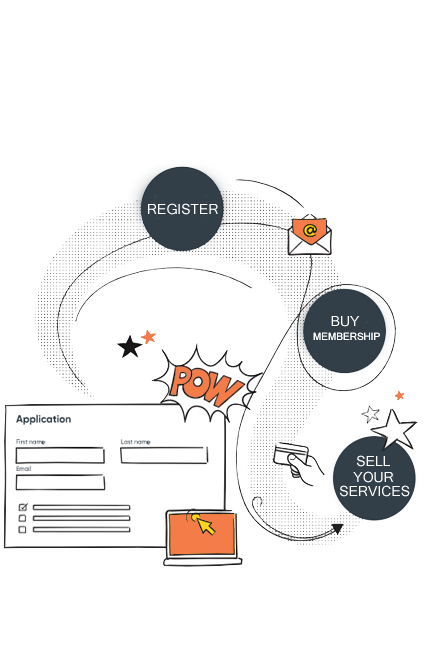Since both are linked so closely, they are often used in financial ratios together to determine a company’s liquidity. For example, a bakery company may need to take out a $100,000 loan to continue business operations. Terms of the loan require equal annual principal repayments of $10,000 for the next ten years.
What is the approximate value of your cash savings and other investments?
The types of current liability accounts used by a business will vary by industry, applicable regulations, and government requirements, so the preceding list is not all-inclusive. However, the list does include the current liabilities that will appear in most balance sheets. In those rare cases where the operating cycle of a business is longer than one year, a current liability is defined as being payable within the term of the operating cycle. The operating cycle is the time period required for a business to acquire inventory, sell it, and convert the sale into cash. Walmart’s current liabilities were $92,198 million in January 2023 and $87,379 million in January 2022.
Accounting for Current Liabilities
The reclassification of the current portion of long-term debt does not need to be made as a journal entry. It can simply be moved to the current liability account from the long-term liability account on the balance sheet. The remainder of the long-term debt due in 13 months or further out should stay in the original account. Accrued expenses are amounts owed for a good or service that has not yet been paid.
Because part of the service will be provided in 2019 and the rest in 2020, we need to be careful to keep the recognition of revenue in its proper period. If all of the treatments occur, $40 in revenue will be recognized in 2019, with the remaining $80 recognized in 2020. Also, since the customer could request a refund before any of the services have been provided, we need to ensure that we do not recognize revenue until it has been earned. The following journal entries are built upon the client receiving all three treatments.
What Is the Current Ratio?
Failure to recognize accrued liabilities overstates income and understates liabilities. Current liabilities, therefore, are shown at the amount of the future principal payment. Therefore, the value of the liability at the time incurred is actually less than the cash required to be paid in the future. SmartAsset Advisors, LLC (“SmartAsset”), a wholly owned subsidiary of Financial Insight Technology, is registered with the U.S. Income taxes are required to be withheld from an employee’s salary for payment to a federal, state, or local authority (hence they are known as withholding taxes).
Our writing and editorial staff are a team of experts holding advanced financial designations and have written for most major financial media publications. Our work has been directly cited by organizations including Entrepreneur, Business Insider, Investopedia, tracking cash payments Forbes, CNBC, and many others. At Finance Strategists, we partner with financial experts to ensure the accuracy of our financial content. The articles and research support materials available on this site are educational and are not intended to be investment or tax advice. All such information is provided solely for convenience purposes only and all users thereof should be guided accordingly.
If the landscaping company provides part of the landscaping services within the operating period, it may recognize the value of the work completed at that time. The current liabilities section of a balance sheet shows the debts a company owes that must be paid within one year. These debts are the opposite of current assets, which are often used to pay for them.
- The most common is the accounts payable, which arise from a purchase that has not been fully paid off yet, or where the company has recurring credit terms with its suppliers.
- Over time, more of the payment goes toward reducing the principal balance rather than interest.
- Current assets are short-term assets that can be easily liquidated and turned into cash in the upcoming 12 month period.
- Even though the overall $100,000 note payable is considered long term, the $10,000 required repayment during the company’s operating cycle is considered current (short term).
Companies typically will use their short-term assets or current assets such as cash to pay them. A current liability is a debt or obligation due within a company’s standard operating period, typically a year, although there are exceptions that are longer or shorter than a year. Current liabilities may also be settled through their replacement with other liabilities, such as nashville bookkeeping services with short-term debt. The natural balance of a current liability account is a credit because all liabilities have a natural credit balance.
This can give a picture of a company’s financial solvency and management of its current liabilities. Although the current and quick ratios show how well a company converts its current assets to pay current liabilities, it’s critical to compare the ratios to companies within the same industry. The quick ratio is the same formula as the current ratio, except that it subtracts the value of total inventories beforehand. The quick ratio is a more conservative measure for liquidity since it only includes the current assets that can quickly be converted to cash to pay off current liabilities. For example, a company might have 60-day terms for money owed to their supplier, which results in requiring their customers to pay within a 30-day term.
Until the customer is provided an obligated product or service, a liability exists, and the amount paid in advance is recognized in the Unearned Revenue account. As soon as the company provides all, or a portion, of the product or service, the value is then recognized as earned revenue. Current liabilities of a company consist of short-term financial obligations that are typically due within one year.
It is the total amount of salary expense owed to employees at a given time that has not yet been paid out by the company. It is a current liability because salaries are typically paid out on a weekly, bi-weekly, or monthly basis. For example, assume that each time a shoe store sells a $50 pair of shoes, it will charge the customer a sales tax of 8% of the sales price. The $4 sales tax is a current liability until distributed within the company’s operating period to the government authority collecting sales tax. The customer’s advance payment for landscaping is recognized in the Unearned Service Revenue account, which is a liability. Once the company has finished the client’s landscaping, it may recognize all of the advance payment as earned revenue in the Service Revenue account.
When a company determines that it received an economic benefit that must be paid within a year, it must immediately record a credit entry for a current liability. Depending on the nature of the received benefit, the company’s accountants classify it as either an asset or expense, which will receive the debit entry. Current liability accounts can vary by industry or according to various government regulations. Typically, vendors provide terms of 15, 30, or 45 days for a customer to pay, meaning the buyer receives the supplies but can pay for them at a later date. These invoices are recorded in accounts payable and act as a short-term loan from a vendor.
Because current liabilities are payable in a relatively short period of time, they are recorded at their face value. This is the amount of cash needed to discharge the principal of the liability. The simplest definition of current liabilities is any expense that must be paid during the current fiscal year. A more refined description is that current liabilities are bills that need to be settled during the current operating cycle. This recognizes that it takes longer than a year for some businesses to acquire materials and supplies, convert those into products, sell the products and collect the cash. Agriculture-based businesses such as wineries and timber producers are examples.










